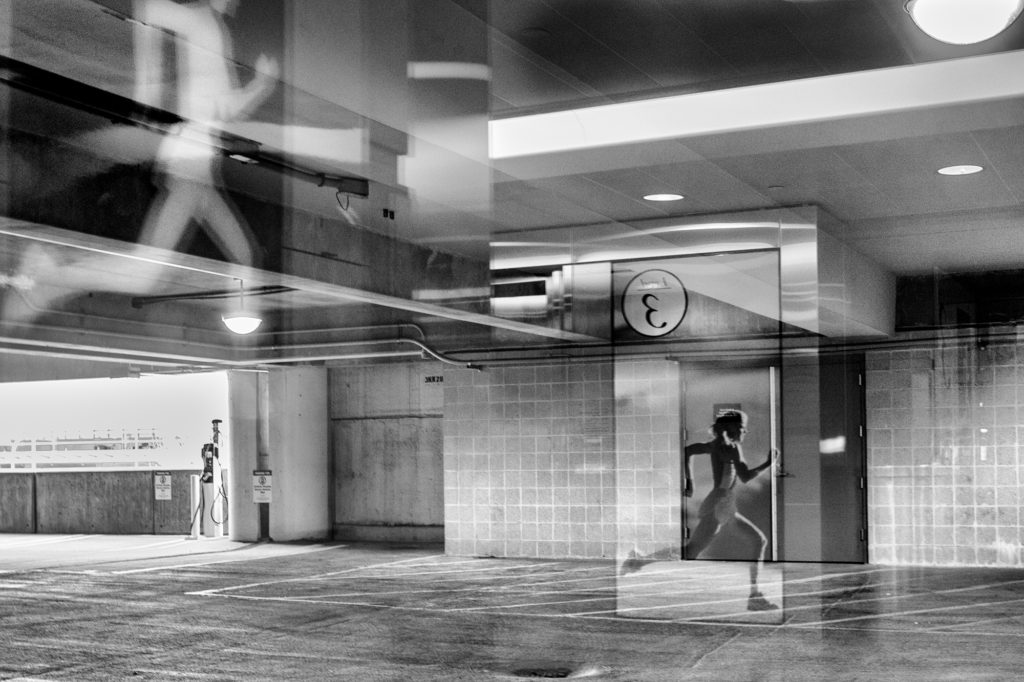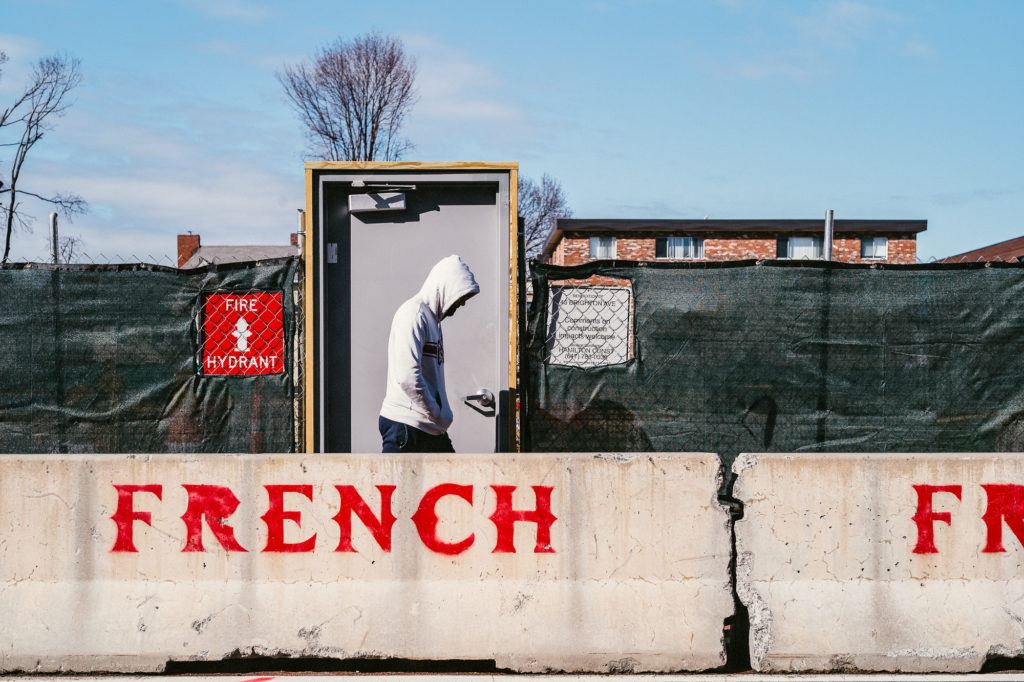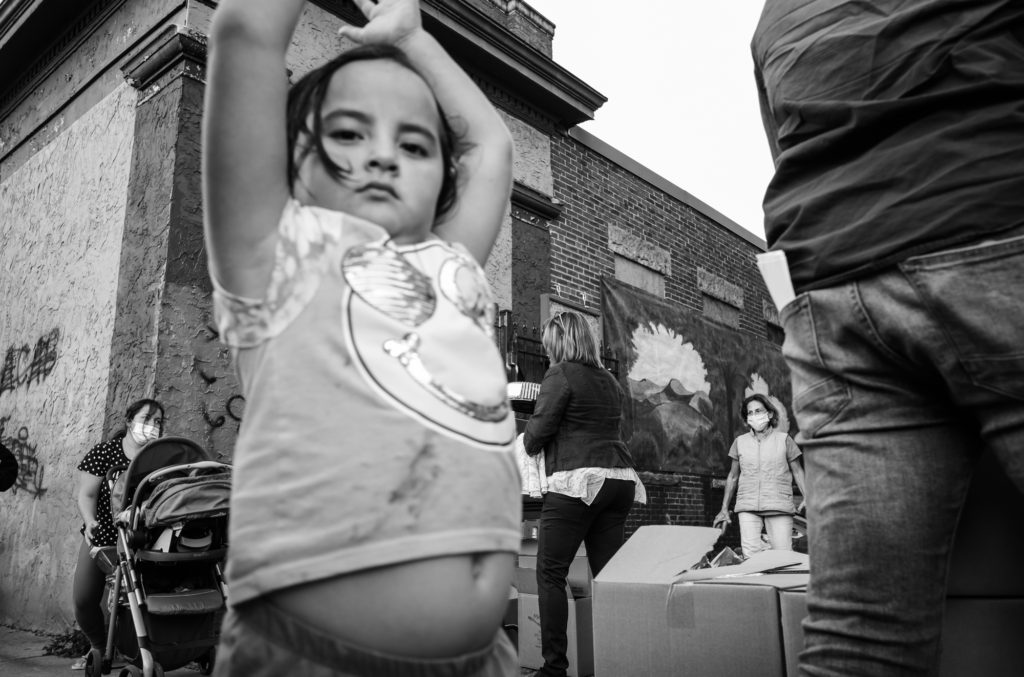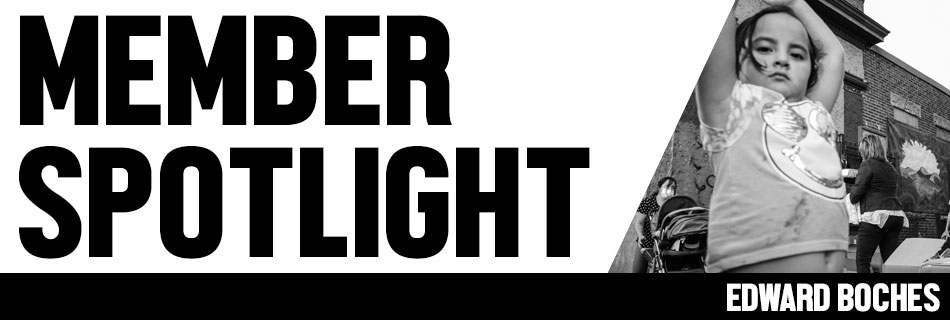
Edward Boches
About | Edward Boches is a Boston and Cape Cod-based photographer with a keen interest in documenting how people live, work, play, struggle and take action. In recent years Boches has sought out subcultures that bring people together, photographing political rallies and protests, inner city boxing gyms, community centers, food pantries, and most recently volunteers.
In January 2021, he launched Postcards from Allston, in partnership with the City of Boston’s Allston Village Main Streets. The site and a public installation celebrate the character, color and creativity of Allston and is intended to give the neighborhood’s creative community a voice and visibility. In the spring of 2020 he curated and produced the site PandemicBoston.com, six projects that collectively capture how the pandemic transformed Boston’s landscape, forced behavior change, and triggered anxiety. The Boston Globe, WGBH and BU Today, among others, covered the online gallery, and in November, Pandemic Boston opened as an exhibit at Panopticon Gallery in Boston.
In 2018, his project Seeking Glory, celebrating the courage and strength it takes to be a fighter, was exhibited as a solo show at the Griffin Museum’s SoWa gallery, juried into the Social Documentary Network’s 10th Anniversary presentation at the Bronx Documentary Center, and featured in Stand Magazine. That same year, Slowly at First, a series that captured his Mom’s last month, was exhibited at the Griffin Museum of Photography, featured as a highlight of the month by the Social Documentary Network, and awarded two honorable mentions at The LA Photo Curator’s Confronting Mortality competition. Other work has shown at the Upstairs Gallery in Orleans, the Providence Center for Photographic Arts, and the Griffin’s Lafayette City Center Passageway in Boston’s Downtown Crossing.
A self-labelled “creative activist,” Boches believes strongly that a photographer has a responsibility to give back to the communities whose stories he tells. As such he regularly conceives community-oriented creative ideas, finding ways to support food pantries, activist communities and artists with his work. He supports local journalism as a contributing photographer with the Provincetown Independent. Every year he recruits a team of photographers to volunteer their services to document the Boston Book Festival. And in partnership with Digital Silver Imaging, he donates images to Wellfleet SPAT, with all proceeds from sales going to SPAT’s shell fishermen relief fund.
Q&A
What are your earliest memories of being artistic? I saw Citizen Kane when I was a freshman in high school and that was it. I wanted to write and direct movies. In high school, I shot and edited Super 8 film, making terrible little shorts about the pollution of the Merrimack River. I went off to college to become a film major, but somehow ended up in advertising.
When did art become a pursuit? Art for me was always a pursuit, but not in the traditional way. After college I spent 35 years as a writer and creative director in advertising, and while it’s far from being a pure, traditional artist, the people I worked with all considered our work, concepts, print and tv ads to be art. None of us cared as much about selling clients’ products as we did about making work that was beautiful, provocative, and inspiring. So for those 30 years my “art,” if you can call it that, was writing, and having conceptual ideas.
I left my agency, Mullen, in 2012 to become a full-time professor at Boston University teaching creative and conceptual classes and portfolio development in the College of Communication. Teaching was a joy, but I missed actually making things. That’s when I started to get serious again about photography. It served two really important purposes for me. One, it fulfilled my need to create. And two, given that I hadn’t used the camera as a creative tool for a long time—I’d focused on my writing—I was, in a way, a beginner again. That helped me better understand what all my students were going through as beginners in writing, art direction, design, and filmmaking.

Are you self-taught or formally educated in visual art? I’m self taught. Though I’ve taken a number of workshops with very good instructors, including Emily Belz, Michael Hintlian, Bill Franson, Amy Thompson Avishai, Sue Anne Hodges, and Rania Matar. They’ve all been incredibly helpful and supportive, but my real education has been taking photographs. And looking at great work. And figuring out what kind of photographer I wanted to be.
I tend to do documentary work and most recently documentary work that can serve a social purpose in some way.
How did you first become involved with CAA? I joined CAA a couple of years ago. At first it was just to be part of the local arts community. But over time, I’ve been juried into shows, given talks, and gotten more involved. I think all artists need a community—a tribe, if you will—of people who do what we do. A community of like minded artists can inspire each other, challenge one another, and foster connections with people who can understand what we are trying to do and the challenges that come with that.
In what other ways are you involved in the local art community? Well, I’m a member of the Griffin Museum of Photography and the PRC (Photographic Resource Center.) But because of my background, I’m also pretty good at developing collaborative projects. In the summer and fall of last year, I curated a website and exhibit called Pandemic Boston. I had been documenting the emptiness of the city during the lockdown in the early days of the pandemic and had a completed project called “Somewhere Along the Curve.” But I thought if there were others who had their version of the story, it would be more interesting. So I gathered five other photographers—Lou Jones, Margaret Lampert, Juan Murray, Leff Larason and Coco McCabe—and developed and build a website, released it to the press, and then worked with the group to get an exhibit at Panopticon Gallery from November 2020 to February 2021.
More recently I conceived an idea called Postcards from Allston to document the changes in Allston, the challenges from development, and the impact on the young artists and musicians who live there but are worried about being priced out. It’s a website. It is a public art installation. It’s actual postcards for sale with all proceeds going to the local art community. And recently, we had a huge sidewalk opening where the entire creative community came out—for photography, music, and other artists who I invited to show their work. You can read about the exhibit here.

What role do you think the artist plays in society? That’s a heavy question. Obviously, artists open our eyes, show us our lives and those of others in new and different ways, teach us to see what we may not have seen before. Art can provoke us, inspire us, reveal things about ourselves that we may not have even known, or certainly been unable to express ourselves. It helps us escape and enables us to embrace new perspectives.
Photography, or at least the kind of photography I aspire to, can help us empathize with people who may be different from us, connect us to worlds and communities that we may not have access to, and, of course, preserve history.
What medium do you currently work in and how did you choose this medium? I’m a documentary photographer. I could never sit still. I am in constant motion. And I have an acute interest in, and curiosity about, people and communities that are different from mine. So a camera satisfies all my needs. It takes me places—and I don’t mean Cuba or Oaxaca or the places that affluent Americans travel to; I mean inner-city Lawrence and Lowell, boxing gyms, Trump rallies, food pantries, oyster flats. And it connects me to the people who live, work, play and struggle there. Sometimes I think that I like the human connections I make and the conversations I have and the knowledge I acquire as much or more than the taking of the pictures.
What is your creative process? Where are you finding ideas for your art these days? I take pictures. Every day. I don’t wait for inspiration. Inspiration is for amateurs. If you’re serious, you get up and go to work. I have no idea what I’m doing. I just take pictures. I look for people, places, and subjects that interest me. And, eventually, I’ll realize I’m working on something that has the potential to be cohesive, and voila, it becomes a project.
Early on, I write an artist statement to help clarify what I think I’m doing, though that’s subject to change. Example: Last fall, I was doing street photography and realized I kept gravitating to food pantries, perhaps an extension of my pandemic project “Somewhere Along the Curve.” So I thought that I had a food insecurity project, which I pursued. But I hit a dead end. The work wasn’t going anywhere interesting enough. But in the process of thinking about it I realized I was making portraits of volunteers. So now I am deep into a project about volunteers—a text and image project—across all walks of volunteerism from the arts to immigration support.
How do you choose your subject matter? Is there a reoccurring theme that carries throughout your work? I like to explore how people live, work, play and struggle. So I sort of look for communities that I can embed into over time. So I intend to go back and back and back, trying to make connections with my subjects. Recently I’ve become interested in being more of a “creative activist,” meaning I want my work to serve a purpose and to help organizations or causes that I care about.
In your opinion, what’s your best/favorite piece you’ve made? Whatever I’m working on at the moment.

What is one of your artistic goals?
1. A Guggenheim
2. A Steidl-produced book
3. A show at MoMA
Kidding. My only real goal is to make better work next time than I made last time. For me, thinking about long term goals takes the focus away from doing the work. What I love, the reason I wake up every day, what I think about when I’m going to bed every night is making the work.
What’s your favorite place to see art, and why? The Howard Greenberg Gallery in NY. There is never anyone there and the work is always astonishing. And usually it’s a large body of work from one major photographer. The Addison Gallery also. They have a great photo collection, even beyond the Robert Frank exhibit there now.
What living artists are you inspired by? Living artists. Ha. I tend to like the dead ones. But Elliott Erwitt is a favorite. Alex Webb. Stephen Shore. And Joel Meyerowitz with whom I worked and traveled when I was in advertising. He is one of the most prolific photographers I know. And unlike many, he has evolved again and again with the new and different projects he’s undertaken.
Do you own any art by other artists? Is so, what artists? I have some paintings that I love by Helen Schulman, Chery Walker and Lisa Houck. And some sculpture by Ruth Slavet. And a lot of books.
Do you have any shows coming up? I have a public installation up right now at 122 Brighton Ave in Allston. Postcards from Allston. As mentioned, we just had a very well attended sidewalk opening. I hope to have a second public installation, even larger, up in the summer or fall sometime, but details are still being worked out.

See more from Edward
Website: edwardboches.com/
Instagram: @edwardboches
Facebook: Edward Boches
